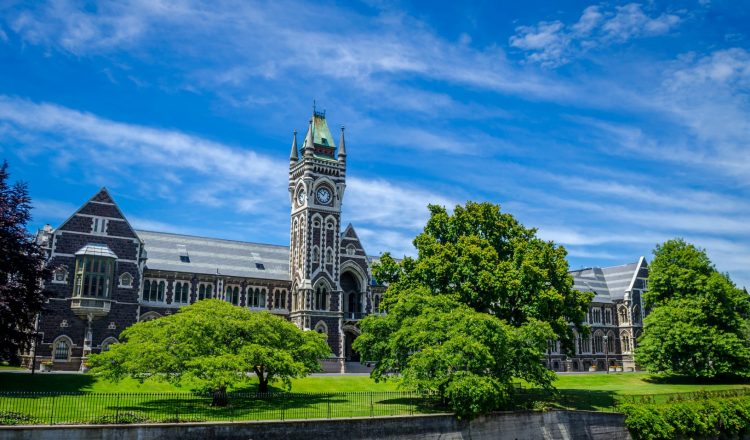我应该什么时候报名孩子去学校?
你的孩子可以在 5 至 6 岁之间在新西兰开始学校。所有儿童必须在六岁生日之前入学。
当你的孩子开始上学时,他们必须每天上学。这与先前的规则有所改变,后者仅从 6 岁起才需要定期出勤。
尽早注册有助于学校进行规划。一旦你决定学校与他们取得联系以招收你的孩子,就安排一个时间让你的孩子开始并安排一些访问,让你的孩子习惯上学。
同期群组条目
如果你的孩子要进入学校队列,新入学者将在全年分组开始,直到他们满 6 岁。
从 2020 年起,新入学者只有在满 5 岁后才能上学,每个学期将有两个入学点(开始和中点)。
采用队列录入的学校需要首先咨询他们的社区。
更换学校
如果你的孩子出于任何原因更换学校,你需要让学校知道他们要离开以及他们将去哪所学校,并确保他们在新学校就读。这包括进入新的小学、中学或中学。
一旦你的孩子在新学校注册,他们的所有个人记录都将从上一所学校发送。
我该如何报名我的孩子?我需要提供什么文书工作?
你直接在学校或库拉报名。联系他们以了解他们的注册流程,并获取他们的注册表格。
用于注册的文件
请咨询学校或库拉,看看他们想要什么文书工作。他们会想要这样的东西:
- 孩子的出生证明或护照复印件作为年龄证明
- 他们的免疫接种证书副本(这是在你的 “好儿童” 书的背面或向家庭医生索取副本)
医疗信息,包括医生的联系方式 - 任何法律文件,例如学校应该了解的监护或访问协议
- 如果你的孩子已经参加了早期儿童教育,他们的国家学生人数 (NSN) 和 ECE 离职者的记录
- 联系方式 — 您的家庭电话号码和地址以及学校或库拉在紧急情况下可以打电话的人,如果他们无法抓住你。
我
可以在我喜欢的任何学校报名我的孩子吗?
换句话说,如果学校有 “入学计划”,则这就授权学校将入学限制在该区内的家庭入学。如果你想让你的孩子上一所分区学校,并且你住在区外,你必须申请参加他们的选票。
我怎样才能帮助我的孩子准备上学?
以下是一些帮助你的孩子熟悉学校的想法:
- 和孩子一起去学校或库拉
- 让校长和老师见见你的孩子
- 在他们的第一天之前安排一些与老师进行探访
- 周末在学校玩游戏-四处跑步,爬上游乐场设备,在球场上踢球
和老师谈谈你的孩子
当教师很了解孩子时,他们就能更好地支持他们的学习。和老师交谈,让他们知道以下事情:
- 如果你的孩子有任何特殊的健康需求,以及该怎么办
- 你的孩子喜欢做什么,他们擅长什么以及是什么让他们开心
- 课外计划以及在你不能时谁接你的孩子
- 任何可能影响你的孩子感觉的东西。
教你的孩子他们需要的实用技能
在你的孩子开始学校之前,如果他们能够:
- 做他们的鞋
- 穿上和脱下他们的外套
- 去厕所洗手
- 吹他们的鼻子
- 打开包装并挂起他们的行李在被告知的地方
- 识别他们什么时候口渴然后喝一杯水
- 求他们需要的东西。
要
帮助他们准备好学习
如果他们出现以下情况,他们可能会发现参加课程更容易
- 可以短时间坐在桌子上的椅子上完成活动
- 离你很舒服
- 知道如何轮流,等事
- 知道颜色的名称
- 知道字母表中的字母
- 知道数字 1 到 9
- 可以正确拿铅笔并使用剪刀
- 可以写他们的名字
- 能够拿着一本图画书仔细翻页。
开始学校和解决的清单
对于所有家庭来说,首次入学或开始新学校都是一个令人兴奋的新阶段。这些清单涵盖了帮助第一天顺利进行的一些重要事项。它们也有助于在每个新学年开始时让孩子安顿下来。
放在孩子的书包里
- 午餐和水瓶。让你的孩子帮你打包他们的午餐盒。谈谈早茶是什么以及午餐是什么
- 学校要求孩子带的铅笔、练习簿和其他用品。一些学校和库拉在学校开始前提供名单,其他学校将在第一周给你一份名单
- 在春季和夏季,戴太阳帽和防晒霜(最好在他们离开之前在家里使用防晒霜)
- 在秋季和冬季期间,一顶温暖的帽子和一些额外的层次,以防它变冷
- 他们的名字在所有东西上,特别是帽子、鞋子和运动衫。向孩子展示在衣服上在哪里寻找他们的名字。
- 换衣服。这对于第一次入学或库拉孩子来说可以放心,尤其是在他们容易发生冲突
的情况下
在你离开之前的早上
- 尽早起床,以便你有足够的时间准备好,你的孩子不会感到急忙和压力
- 有营养丰富的早餐
- 如果没有校服,请选择让孩子自己轻松管理的衣服和鞋子
- 足够的时间去学校或库拉。在路上聊聊他们认为自己的一天会是什么样子以及他们回家后想做什么。
留出
你上学的时候
- 去教室跟你的孩子一起向老师打招呼或起亚奥拉
- 如果你不是接孩子的人,告诉老师放学后的安排-尽管如果你能在第一次接孩子的话,它可以帮助他们更快地安顿下来
- 向孩子展示或提醒你的孩子厕所在的位置以及任何其他重要的地方,例如在一天结束时将在哪里领取厕所
- 如果孩子认识其他孩子,它可以帮助他们感觉自己属于。注意在抵达时停下来与孩子、父母和/或照顾者聊天
- 短说再见。教师有很多帮助孩子安顿和管理生活不安的孩子的经验。
放学后
- 如果你接孩子,问老师他们的一天是怎么样的
- 预计你的孩子在头几周会非常累。在你回家的时候抽出时间闲逛。他们可能需要在外面奔跑,带一些图画书在豆袋里放松身心,或者只是在电视机前倒塌
- 不要从下午开始安排很多活动-让他们先习惯自己的新日常生活
- 给他们一个营养丰富的下午茶。他们可能会非常饿!
- 让他们在家中进行调整,然后再询问自己的一天太多。让任何年龄的孩子在与你做其他事情时谈论自己的一天都要容易得多-帮助做晚餐、整理或烘干菜肴
- 有一个空间去学校论文-这是你被新闻稿、权限单、家长帮助请求等所淹没的开始。让空间靠近日历很有用,这样你就可以在重要的日期写
- 有时间一起阅读。一些学校会在第一天送阅读书回家分享,其他学校可能不会。但是,从一开始就养成每天都有一些共享阅读的习惯。

















































